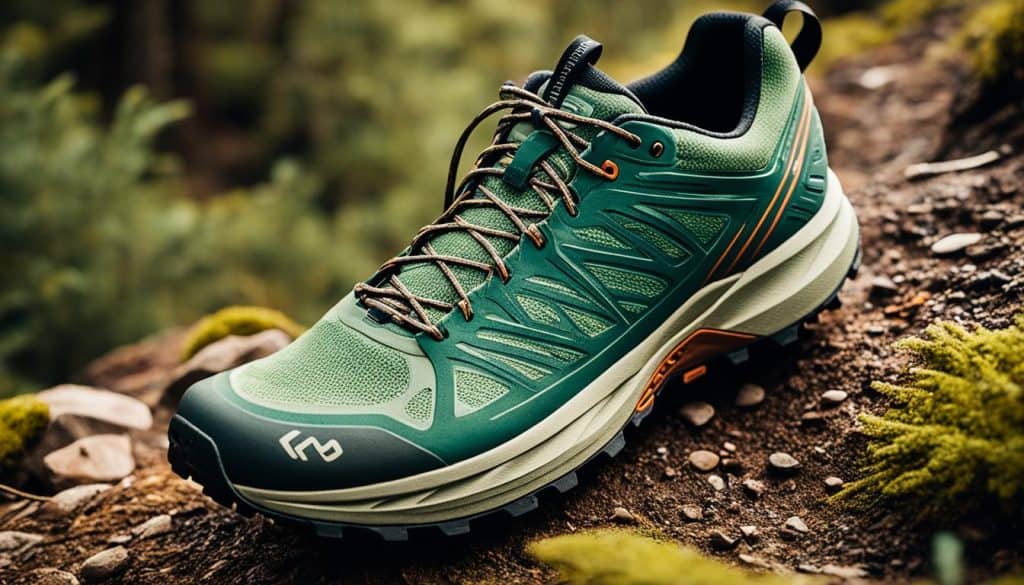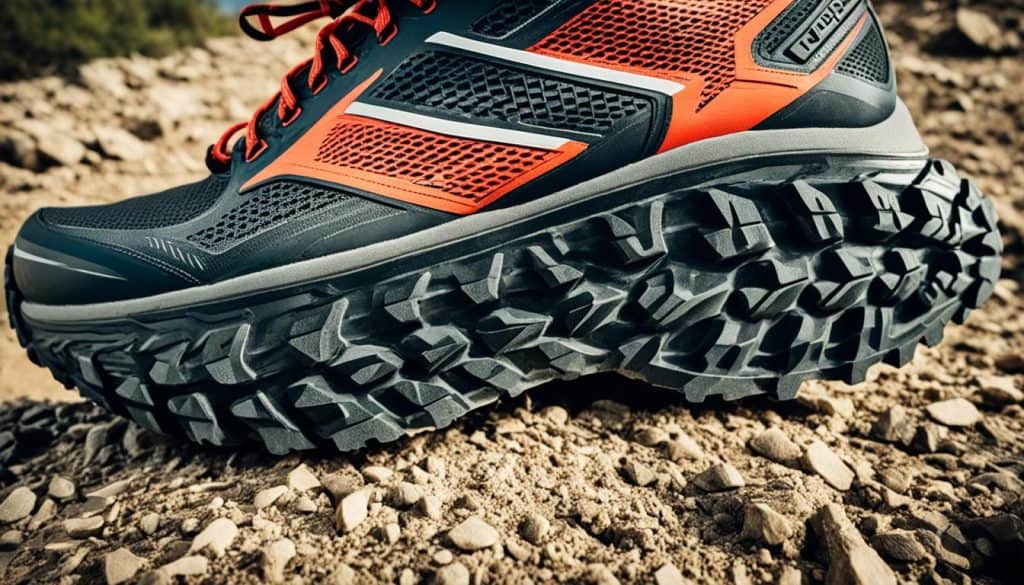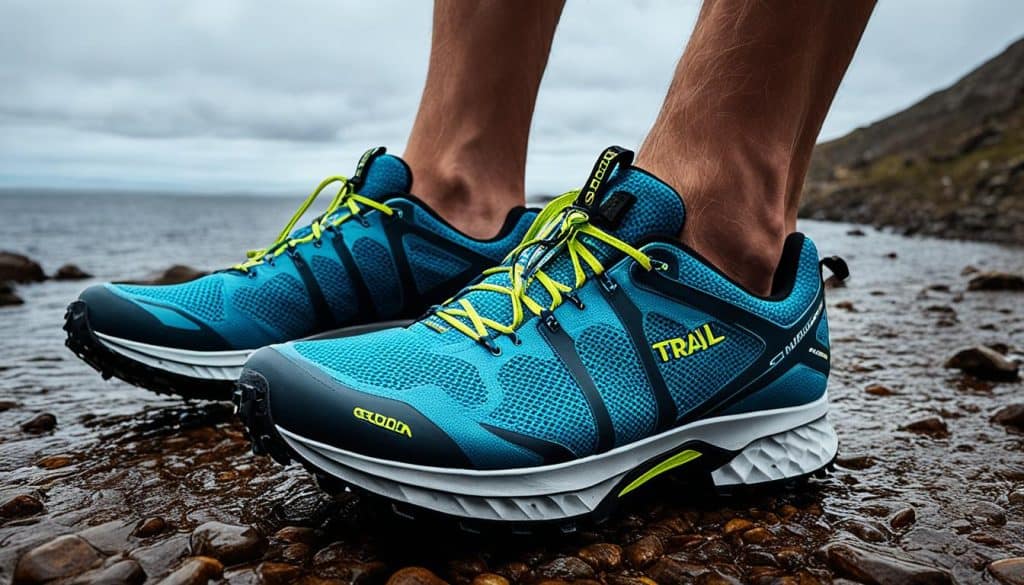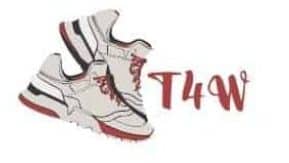Are you an off-road adventurer, drawn to the thrill of conquering rugged trails? If so, then you know the importance of having the right gear to enhance your performance and comfort. When it comes to trail running, your choice of sneakers can make all the difference. But with so many options out there, how do you choose the perfect pair for your adventures?
Well, you’re in luck! In this comprehensive guide, we’ll dive deep into the world of trail running sneakers, providing you with expert tips and insights to help you find the ideal pair for your off-road pursuits. Whether you’re a seasoned trail runner or just starting out, we’ve got you covered.
So, lace up your shoes and get ready to discover the trail running sneakers that will take your off-road adventures to new heights.
Determining Accurate Shoe Size for Online Purchases
When it comes to buying trail running sneakers online, determining the accurate shoe size can sometimes be challenging. Sizing can vary significantly across brands and models, making it crucial to ensure a proper fit for optimal comfort and performance. To help you navigate this process, we’ve compiled some valuable tips to ensure your online shoe purchase meets your expectations.
- Contact the Brand or Retailer: If you’re unsure about the sizing of a particular shoe, reach out to the brand or retailer directly. They can provide valuable insights and guidance on whether the shoe fits true to size or if you need to consider sizing up or down.
- Check Running Forums: Running forums can be an invaluable resource for determining shoe size accuracy. Fellow runners often share their experiences and recommendations, giving you a better understanding of how a specific shoe fits. Look for posts or discussions related to the brand or model you’re interested in.
- Consider Centimeters: While shoe size charts often provide measurements in both US and European sizes, it’s worth noting that these can still vary slightly between brands. To ensure greater accuracy, consider using the size in centimeters as an indication of shoe length. Measure your foot in centimeters and compare it to the brand’s size chart to find the best match.
By taking these steps, you can increase the likelihood of choosing the right size for your trail running sneakers, even when buying online. Remember, a comfortable and properly fitting shoe is essential for an enjoyable and injury-free running experience.
“Choosing the right size is crucial for the perfect fit. Sizing can be inconsistent across different brands and models, so it’s important to do your research and reach out for assistance if needed.”
Considering Width and Volume in the Toe Box
Find the Perfect Fit for Your Feet
When it comes to trail running, one size does not fit all. Foot shapes vary, and it’s crucial to find a trail running shoe that matches the width and volume of your foot’s toe box. A proper fit in the toe box is essential for both comfort and performance on the trails.
Many popular trail running brands offer wider options for those with broader feet, providing additional room and preventing discomfort that can arise from a tight fit. On the other hand, if you have narrower feet, certain brands cater specifically to these foot shapes, ensuring a snug and secure fit.
Enhance Your Comfort and Performance
By selecting a trail running shoe that matches your foot’s width and volume, you can enhance your overall comfort and performance on the trails. Shoes that are too narrow can cause pain, blisters, and hotspots, while shoes that are too wide can lead to a lack of stability and support.
A proper fit in the toe box allows your toes to splay naturally, providing enough room for movement and reducing the risk of discomfort or injury. It ensures that your foot remains secure within the shoe, offering stability on uneven terrain and allowing for efficient toe-off during the running motion.
When trying on trail running shoes, pay close attention to the fit in the toe box. Ensure that there is enough width and volume to accommodate your foot’s natural shape, but also make sure your foot feels secure without excessive movement inside the shoe.

Take the Next Step
Don’t overlook the importance of finding a trail running shoe that offers the right width and volume in the toe box. A shoe that fits properly can make a world of difference in your trail running experience.
Next, we’ll explore how to choose the right shoe based on the terrain you’ll be running on. Let’s find you the perfect companion for your off-road adventures.
Choosing the Right Shoe for Your Running Terrain
When it comes to trail running, the right shoe can make all the difference in your performance and comfort. The running terrain you encounter can vary greatly, from wet muddy conditions to hard dry trails. That’s why it’s essential to choose a shoe that is designed to handle the specific challenges of your running terrain.
The shoe’s design plays a crucial role in providing the necessary traction and support. One important aspect to consider is the lug pattern and depth for optimal traction. A shoe with a well-designed lug pattern and sufficient depth can grip various surfaces and provide stability, even in slippery and uneven conditions.
For wet muddy conditions: Look for trail running shoes with aggressive lug patterns and deep lugs. These features will help you navigate through muddy terrain with confidence and prevent slips and falls. Brands like Salomon and La Sportiva offer models specifically designed for muddy conditions.
For hard dry trails: Trail running shoes with a less aggressive lug pattern and shallower lugs are more suitable for hard and dry trails. These shoes provide a smoother ride and allow for efficient forward movement on firm surfaces. Brands like Brooks and New Balance offer versatile shoes optimized for dry trails.
Furthermore, versatile shoes that provide traction and comfort across different surfaces are highly recommended. They allow you to transition seamlessly between various terrains without compromising performance or comfort. Brands like Merrell and Inov-8 offer a wide range of versatile trail running shoes that cater to different terrains and preferences.
Remember, selecting the right shoe for your running terrain is vital in ensuring a pleasant and successful trail running experience. Take into account the shoe’s design, including the lug pattern and depth for optimal traction. Consider the specific recommendations for different trail conditions, whether it’s wet and muddy or hard and dry. And don’t forget to choose versatile shoes that provide traction and comfort across different surfaces.
Assessing Cushioning Level Based on Trail Technicality
When it comes to trail running sneakers, finding the right cushioning level is crucial, especially considering the technicality of the trails you’ll be conquering. The balance between ground feel and comfort plays a significant role in your overall running experience.
For runners who prefer a plush ride and maximum cushioning, sneakers with ample cushioning are a great choice. These shoes provide exceptional shock absorption and can make your runs on less technical trails feel incredibly comfortable. However, when it comes to technical trails with uneven terrain, deeply cushioned shoes may affect stability and ground connection, making it challenging to navigate through tricky sections.
It’s essential to assess the technicality of the trails you’ll be running on and consider your personal preferences when choosing the right cushioning level. If you primarily run on technical trails with rocks, roots, and steep sections, opting for a shoe with a lower cushioning level can enhance stability and ground feel, allowing for better control and responsiveness.
However, if you prefer a more comfortable and cushioned ride, especially on less technical trails, shoes with higher cushioning levels can provide the cushioned support and shock absorption you desire.
Here are some popular trail running sneakers known for their cushioning and stability on uneven terrain:
- Salomon Speedcross 5: Known for its excellent cushioning and stability, the Salomon Speedcross 5 offers a plush ride while maintaining ground connection, making it suitable for technical trails.
- Hoka One One Speedgoat 4: Designed for long-distance trail running, the Hoka One One Speedgoat 4 features generous cushioning and ample traction, providing both comfort and stability on challenging terrains.
- Brooks Cascadia 15: With its protective cushioning and reliable traction, the Brooks Cascadia 15 offers a balanced combination of comfort and stability on uneven trails.
Remember, choosing the right cushioning level for your trail running sneakers depends on your personal preference, the technicality of the trails, and the ground feel versus comfort trade-off you prioritize.
Evaluating the Shoe’s Weight for Your Needs
When it comes to choosing trail running sneakers, the weight of the shoe is an important factor to consider. Different runners have varying preferences when it comes to the weight of their shoes. Some runners prefer lightweight shoes for a more natural feel, while others prioritize comfort on long runs.
If you enjoy a minimalist running experience and want to feel more connected to the trail, lightweight shoes may be the right choice for you. These shoes typically have a lower profile and are designed to provide a barefoot-like sensation, allowing you to feel the trail beneath your feet. They are often favored by experienced trail runners who appreciate the agility and responsiveness that lightweight shoes offer.
“Lightweight trail running shoes make me feel like I’m flying on the trail. The minimal weight allows for quicker strides and a more natural running experience.” – Sarah, experienced trail runner.
On the other hand, if you prioritize comfort during long runs and want additional cushioning and support, slightly heavier shoes may be a better option. These shoes offer additional padding and stability, which can help reduce discomfort and fatigue during extended runs. They are ideal for runners who value a plush and cushioned feel.
It’s important to find a balance between weight and comfort that suits your individual needs. The right shoe weight can have a significant impact on your performance and enjoyment while trail running. Consider your running style, preferences, and the type of terrain you’ll be tackling when making your decision.
Key Considerations:
- Lightweight shoes: Provide a natural feel and agility on the trail.
- Slightly heavier shoes: Offer additional comfort and support on long runs.
- Balance weight and comfort: Find the shoe weight that enhances your performance and enjoyment.

Choosing the right trail running sneakers involves finding the perfect balance between weight and comfort. Whether you opt for the natural feel of lightweight shoes or the added comfort of slightly heavier ones, prioritize your individual needs to enhance your trail running experience.
Understanding the Importance of Outsole Rubber Quality
In trail running, the quality of the outsole rubber can make all the difference in your performance and overall experience. The outsole is the bottom part of the shoe that comes into contact with the ground, providing traction and stability. When it comes to outsole rubber quality, one name stands out: Vibram Megagrip.

Vibram Megagrip is a rubber compound known for its superior traction on both wet and dry surfaces. It is specifically designed to excel in challenging conditions, such as wet rocks and varied terrains. With Vibram Megagrip, you can confidently tackle any trail and overcome the most demanding surfaces.
Whether you’re running on wet rocks, loose gravel, or steep inclines, the grip provided by Vibram Megagrip will keep you stable and secure. It offers exceptional traction across a range of surfaces, giving you the confidence to push your limits and explore new trails.
Another essential aspect of outsole rubber quality is durability. Trail running exposes your shoes to rough and abrasive surfaces, making it crucial to have an outsole that can withstand the demands of the trail. Vibram Megagrip is known for its durability, ensuring that your shoes will last through many challenging runs.
When you’re out on the trail, weather conditions can change quickly. Rain, mud, and even snow can significantly impact your grip and performance. That’s why having an outsole rubber with exceptional grip in changing weather conditions is vital. Vibram Megagrip is designed to maintain its traction regardless of the weather, so you can run with confidence, regardless of what nature throws your way.
To summarize, outsole rubber quality, particularly Vibram Megagrip, is essential for trail running. Its superior traction on wet rocks and varied terrains, durability, and performance in changing weather conditions make it the preferred choice for serious trail runners. Invest in shoes equipped with Vibram Megagrip to experience the grip and durability that will enhance your trail running adventures.
Additional Considerations: Breathability and Waterproofing
When it comes to choosing the perfect trail running sneakers, there are additional factors that you should consider to ensure the ultimate comfort and performance. Two key considerations are breathability and waterproofing.
Breathability is crucial in trail running sneakers as it allows your feet to stay cool and dry, even during intense runs. Proper ventilation helps prevent excessive sweating and discomfort. Look for shoes with breathable materials and mesh panels that promote airflow and keep your feet feeling fresh.
Waterproofing is essential, especially if you often encounter wet or muddy trail conditions. A waterproof trail running shoe provides protection by preventing water from seeping through and keeping your feet dry. It ensures that you can confidently tackle any terrain, regardless of changing weather conditions.
“Proper breathability and waterproofing are critical in trail running sneakers, enhancing your overall running experience and enabling you to perform at your best.”
So, whether you’re running through rain-soaked trails or during hot summer days, having trail running sneakers with excellent breathability and effective waterproofing is key to a comfortable and enjoyable run.
Don’t compromise on these additional considerations. Look for trail running sneakers that prioritize both breathability and waterproofing to meet the needs of your off-road adventures.

Summary:
- Choose trail running sneakers with proper breathability to keep your feet cool and reduce sweat.
- Look for shoes with breathable materials and mesh panels for improved airflow.
- Ensure your trail running sneakers offer effective waterproofing to keep your feet dry in wet or muddy conditions.
- Having both breathability and waterproofing in your trail running shoes enhances your overall running experience and performance.
Essential Trail Running Gear for a Successful Run
When it comes to trail running, having the right gear can make all the difference in ensuring a successful and enjoyable run. Whether you’re a seasoned trail runner or just getting started, here are some essential items you should consider adding to your trail running gear collection:
1. Moisture-Wicking Clothing
Trail running often means facing various weather conditions and challenging terrains. To stay comfortable and dry throughout your run, opt for moisture-wicking clothing. These fabrics draw sweat away from your body, allowing it to evaporate quickly, keeping you cool and minimizing the risk of chafing. Look for trail running shirts, shorts, and leggings made from materials like polyester or merino wool.
2. Hydration Pack

Keeping hydrated during your trail runs is crucial for maintaining optimal performance. Invest in a hydration pack that allows you to carry water or sports drinks conveniently. Look for lightweight, ergonomic designs with adjustable straps to ensure a comfortable and secure fit. Some hydration packs also feature extra storage compartments for carrying snacks, mobile phones, or other essentials.
3. Trail Running Socks
Regular athletic socks may not provide the necessary support and cushioning your feet need for trail running. Instead, choose trail running-specific socks that offer enhanced protection and blister prevention. Look for socks with moisture-wicking properties, extra padding around the heel and toes, and seamless construction. Quality trail running socks can significantly improve the comfort and durability of your runs.
4. Proper Trail Running Shorts or Pants
Wearing the right shorts or pants for trail running can improve your performance while offering its unique benefits. Opt for lightweight, quick-drying shorts for warm weather or longer, moisture-wicking leggings or pants for cooler temperatures or rough terrain. Features like zippered pockets, reflective details, and reinforced knees can also enhance your overall trail running experience.
5. Headlamp or Trail Running Lights
If you’re planning to run in low-light or dark conditions, a headlamp or trail running lights are essential for safety and visibility. Look for lightweight headlamps or compact clip-on lights that provide sufficient illumination without hindering your movement. Consider models with adjustable brightness settings and long battery life to ensure uninterrupted visibility during longer runs.
Remember, the key to a successful trail run is being prepared with the right gear. Investing in essential trail running gear will not only enhance your comfort and safety but also improve your overall performance. So gear up, hit the trails, and enjoy the exhilarating experience of trail running!
Trail Running Techniques and Tips
If you’re new to trail running or looking to improve your skills, here are some valuable techniques and tips to help you conquer the trails with confidence.
Maintaining Balance and Stability
Running on uneven terrain requires proper balance and stability. Keep these tips in mind:
- Keep your gaze forward and avoid looking down, which can disrupt your balance.
- Engage your core muscles to maintain stability.
- Take shorter, quicker steps to adapt to varied surfaces.
Efficient Uphill and Downhill Techniques
Mastering uphill and downhill running can greatly enhance your trail running performance:
- When running uphill, maintain an upright posture and use your arms for extra propulsion.
- On the descent, lean slightly forward, but not too much, and let gravity work in your favor.
- Shorten your stride on steep downhills to maintain control.
Strategies for Pacing and Energy Conservation
Long trail runs require smart pacing and energy conservation. Consider these strategies:
- Start at a comfortable pace to preserve energy for later stages of the run.
- Break up the trail into manageable segments and set small goals along the way.
- Utilize walking or power hiking on steep climbs to conserve energy.
- Stay properly hydrated and fuel your body with nutrition throughout the run.
Remember, trail running is not just about speed, it’s about embracing the challenges and enjoying the scenic beauty of nature. Take your time to explore and savor the experience.
By implementing these trail running techniques and tips, you’ll be well-equipped to tackle any trail and elevate your performance to new heights.
| Technique | Tips |
|---|---|
| Maintaining Balance and Stability | 1. Keep your gaze forward 2. Engage your core muscles 3. Take shorter, quicker steps |
| Efficient Uphill and Downhill Techniques | 1. Maintain an upright posture uphill 2. Lean slightly forward downhill 3. Shorten your stride on steep descents |
| Strategies for Pacing and Energy Conservation | 1. Start at a comfortable pace 2. Set small goals 3. Utilize walking on steep climbs 4. Stay hydrated and fuel properly |
> 
Are Trail Running Sneakers Suitable for Wet and Slippery Conditions?
Yes, running sneakers with best grip are suitable for wet and slippery trail conditions. These specialized shoes are designed with aggressive treads and sticky rubber soles to provide superior traction on challenging terrains. With their water-resistant materials, they offer stability and protection, making them perfect for all-weather trail running.
Conclusion
After reading this comprehensive guide, you are now equipped with the knowledge to choose the perfect trail running sneakers for your off-road adventures. Whether you’re a seasoned trail enthusiast or just starting your journey, having the right footwear is essential for maximizing performance and comfort.
By determining accurate shoe size, considering width and volume in the toe box, and choosing the right shoe for your running terrain, you can ensure a proper fit and enhanced enjoyment on the trails.
Remember to assess cushioning level based on trail technicality, evaluate the shoe’s weight for your needs, and pay attention to outsole rubber quality to ensure superior traction and durability. Additional considerations like breathability and waterproofing can further enhance your trail running experience.
Now, armed with this guide, it’s time for you to confidently explore the great outdoors with the perfect trail running sneakers. So lace up, hit the dirt, and embark on your off-road adventures with the comfort, performance, and style that will take your trail running to the next level.


